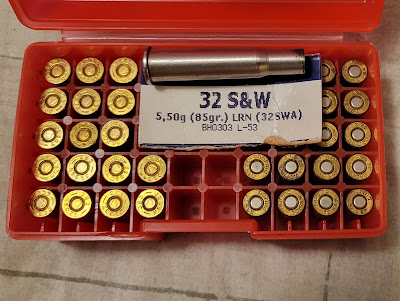A request was made by our Editrix to talk about similar options for
semi-automatic firearms. Due to the physics involved, this will almost solely
deal with parts replacement. Keep in mind that not only can this get expensive
fast, but it may also require a certain amount of part fitting.
A regularly repeated concept throughout the metallic cartridge era is a set of parts that will allow the use of .22 Long Rifle rounds in a centerfire firearm. Whether to reduce training expenses or increase versatility, this long standing idea has some value. The Colt Ace .22 conversion was one of the first successful options for use in a semi-automatic firearm, in this case the normally .45 ACP Colt 1911 and 1911A1 pistols. These conversion kits came with a lightened slide, barrel, ejector, barrel bushing, recoil spring guide, recoil spring, recoil spring plug, slide stop, and magazine, and could be used with any Government Model 1911.
Actual Colt branded kits are collector’s items and priced appropriately. However, there are other options on the market for converting semi-automatic pistols to rimfire. Among others, Advantage Arms offers a variety of kits for several different pistols. Pricewise, these can nearly equal the price of a dedicated budget .22 pistol. The Glockparts, Brownells, and MidwayUSA websites list this brand as well as others.
Similar concepts have been tried with semi-automatic
centerfire rifles, and by far the most common today are for America’s Rifle, the
AR-15. I have an earlier model made by CMMG
and it works quite well, turning any .223/5.56 AR into a rimfire rifle
suitable for training or small game hunting. The more recent versions of this
kit lock back the bolt when empty, something my older one doesn’t do.
Other options are inserts and chamber adaptors like those made for many years by Sports Specialties/MCA Sports. These can be a much more economical option, but won’t cycle a repeating action. Inserts are for use in single shot and break action rifles and shotguns, and incorporate a chamber and short length of rifled barrel (usually around 10”) that fit inside the chamber and barrel of the parent firearm. A selection of these in popular calibers could make a single shot or double barrel shotgun very versatile indeed. However, at $95 each, the cost would add up quickly.
Chamber adapters, however, are the size and shape of a cartridge sans bullet and are generally for cartridges of similar bullet diameter. Inserts can be for almost any caliber smaller than the host firearm, and can be more easily used in repeating firearms. I bought one of MCA's more budget-friendly chamber adaptors that allows me to shoot .32 Auto and .32 S&W in my .30-30 Marlin. It’s reasonably accurate, and would be useful for small game at moderate ranges.
Finally, there are options to fire more than one centerfire caliber from semi-automatic pistols. This involves the purchase of spare barrels at a bare minimum, and possibly recoil springs and magazines as well. For example, buying a Glock or the new Smith & Wesson M&P in 10mm would potentially enable use of barrels in .40 S&W, .357 Sig, and 9mm, and a pistol in .40 S&W could potentially use barrels in .357 Sig and 9mm.
I used the word potentially above because some caliber barrels have different external diameters and won’t mix and match with all slides. Having to buy an entire upper half of a gun (slide, barrel, and probably recoil spring) really puts this on the wrong side of a cost-benefit analysis.
That’s the semi-automatic side of the caliber versatility
world. Hopefully this information was both interesting and useful.




I am late to the game, as usual, but I have a revolver question. Does anyone have any experience with the Armscor M200? It is a .38 special revolver with a 4" barrel.
ReplyDeleteI have been considering getting a revolver, but I am on a limited income, read that as cheapskate. And I have read some pretty good things on the various gun reviewers online. But since I tend to take what most of those types say with a grain of salt, I wonder if anyone has any hands on with these guns.
As I only plan on shooting standard velocity .38 special rounds, I don't plan on spending the extra money to get the .357 magnum. And I don't think that I can get a S & W used for anywhere close to the cost of a new Armscor. I am pretty set on the 4" barrel, both for getting the full velocity out of the round, and to help with the sight plane.
Any help would be appreciated.
And thanks, David, for both this post, and the other one, about caliber versatility. They both helped me to set things straight in my head.